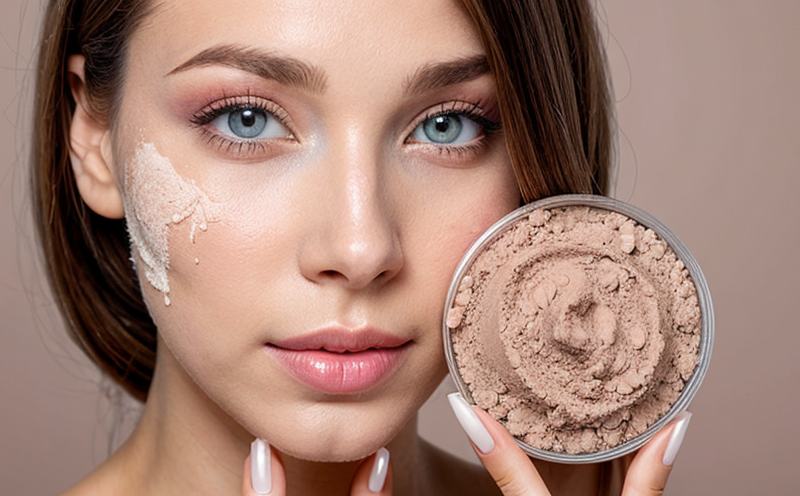UV Absorber Allergen Testing in Beauty Products
UV absorbers are a critical component of many cosmetic products, designed to protect skin and other surfaces from ultraviolet radiation. However, the use of these chemicals can sometimes trigger allergic reactions or sensitization in individuals with sensitive skin. This service focuses on ensuring that beauty products containing UV absorbers meet stringent safety standards before reaching consumers.
The testing process involves several steps aimed at identifying potential allergens within the product formulation. Samples are prepared by dissolving or extracting the relevant components, followed by analysis using various analytical techniques such as chromatography and spectroscopy. These methods help pinpoint any allergenic compounds present in trace amounts which might otherwise go unnoticed.
The primary focus of this service is to ensure that all beauty products containing UV absorbers comply with international standards like ISO 18529, which sets guidelines for the identification of allergens in cosmetic products. Compliance ensures product safety and protects consumers against adverse reactions while maintaining brand integrity.
Our team of experts uses cutting-edge technology and advanced analytical techniques to conduct thorough testing. We employ a combination of instrumental analysis (e.g., HPLC, GC-MS) alongside microbiological assays where necessary, ensuring comprehensive evaluation of each sample. This approach guarantees accurate results that are reliable and repeatable.
Compliance with these standards not only enhances consumer confidence but also supports ethical business practices by promoting safer products. By adhering to strict protocols throughout the testing process, we ensure that every batch of beauty product receives rigorous scrutiny before being released onto the market.
In addition to detecting allergens, this service helps manufacturers identify potential issues early in development stages, allowing for improvements and adjustments if needed. Early intervention can save time and resources while reducing risks associated with launching potentially problematic products.
Our commitment to quality extends beyond just identifying allergens; it encompasses ensuring that all aspects of the testing process adhere strictly to industry best practices. From sample preparation through final reporting, we maintain high standards across every step involved in this essential service.
Benefits
- Ensures compliance with international safety standards
- Reduces risk of product recalls and liability issues
- Promotes consumer trust through transparent quality assurance processes
- Supports ethical business practices by enhancing overall product safety
- Identifies potential allergens early in the development stage, allowing for timely adjustments
Environmental and Sustainability Contributions
- Reduces waste generation through accurate testing that minimizes unnecessary production runs
- Promotes sustainable practices by encouraging continuous improvement of product formulations
- Supports eco-friendly manufacturing processes by identifying safer alternatives where necessary
- Aids in reducing environmental impact associated with the disposal of hazardous substances
Customer Impact and Satisfaction
The success of our UV absorber allergen testing service lies not only in meeting regulatory requirements but also in exceeding customer expectations. By providing accurate, reliable results quickly, we contribute significantly to enhancing customer satisfaction levels.
Clients benefit from peace of mind knowing their products are safe for consumers and free from harmful allergens. This reduces the likelihood of negative publicity or legal challenges resulting from product-related incidents. Additionally, successful completion of this service can lead to increased market share and brand loyalty among discerning customers who prioritize safety and quality.
We strive to create long-term partnerships with our clients by offering ongoing support through regular updates on emerging trends in allergen identification and best practices for minimizing risks associated with UV absorbers and other active ingredients used in cosmetic products.





